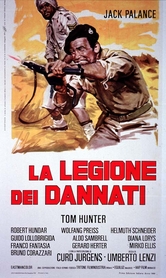| Battle of the Commandos | |
|---|---|
 | |
| Directed by | Umberto Lenzi |
| Screenplay by |
|
| Starring | |
| Cinematography | Alejandro Ulloa [1] |
| Edited by | Giese Rohm [1] |
| Music by | |
Production companies |
|
Release dates |
|
Running time | 94 minutes |
| Countries |
|
Battle of the Commandos (also known as Legion of the Damned) is a European Macaroni- War film directed in 1969 by Umberto Lenzi. The movie was a co-production between Italy (where it was released as La legione dei dannati), West Germany (where is known with the title Die zum Teufel gehen) and Spain (where it is known as La brigada de los condenados). [2] [3]